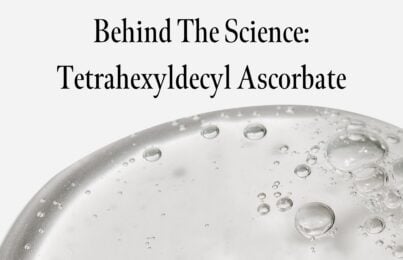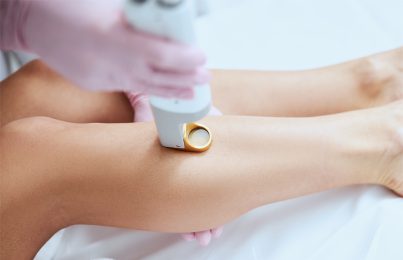09/01/22. You’ve probably heard of a professional treatment called dermaplaning. Maybe you’ve even seen it offered as a service at your local skincare clinic or medspa. In this post, I’ll explain what it is, how it works, and why you should consider getting it done if you haven’t already. Trust me when I say the benefits of dermaplaning are real!
What Is Dermaplaning?
Dermaplaning is similar to shaving. A tool with a metal blade is scraped over the skin to remove the top layers of dead cells and vellus hair (which is more commonly known as peach fuzz). Because it’s technically a form of exfoliation—physical exfoliation to be exact—it can make the skin look smoother and feel softer.
You might have heard of at-home dermplaning. It also removes dead cells and peach fuzz, but it’s generally less effective than professional dermplaning. That’s because it’s not performed by an expert, so there might be some user error involved. Also, the tools that are available for at-home use aren’t as effective as what’s available in a professional setting. Despite that, I still think it can be beneficial if done correctly! Read my beginner’s guide to at-home dermaplaning.
How Does Professional Dermaplaning Work?
Dermplaning is performed on the face, under the chin, and on the sides of the neck. It’s quick and painless, although you may feel a slight scratching sensation during it. The expert will begin by cleansing your skin. Sometimes, an antiseptic toner is applied to remove any potential residue. Then, they’ll hold your skin taut, position a 10-gauge scalpel at a 45-degree angle, and glide it over your skin. All in all, it takes about 20 minutes. Afterward, they might apply a soothing, hydrating mask to the skin.
Trained professionals often combine dermaplaning with a chemical peel to enhance exfoliation. As I said before, dermaplaning is physical exfoliation. Combining it with chemical exfoliation can prevent clogged pores and lessen the appearance of dark spots and hyperpigmentation.
What Skin Types Can Benefit from Professional Dermaplaning?
Nearly all skin types can benefit from dermaplaning, as long as there are no active, infected breakouts going on. You should also avoid dermaplaning if you have cold sore outbreaks, skin conditions like psoriasis and eczema, contact dermatitis, sunburn, or skin growths. It’s better to be safe than sorry and avoid anything that could worsen these conditions or cause irritation!
If you have thin, easily irritated skin, you can still benefit from dermaplaning, but I wouldn’t combine it with a chemical peel. It could be too much exfoliation for your skin. The last thing you want to do is disrupt your moisture barrier and cause redness, irritation, or inflammation.
Here are some specific ways dermaplaning can benefit your skin:
- Fading the appearance of acne scars and post-breakout marks
- Fading the appearance of hyperpigmentation
- Removing actinic keratosis (scaly skin patches)
- Removing peach fuzz
- Addressing dullness and revealing brighter, more glowing skin
How Often Should I Get Professional Dermaplaning Done?
It can be done every one to four weeks, depending on your skin type and skin goals. For example, if your goal is to minimize hyperpigmentation, your skin professional may recommend doing it as part of a series of treatments, every other week alternating with light chemical peels (so, week one would be a chemical peel, the next week would be dermaplaning, and so on).
Ask your skin professional if you’re not sure how often you should get it done. They’ll suggest the best schedule for you. Make sure you tell them about the products you’re using at home, including exfoliating acids and retinoids, which might affect their answer.
Will Professional Dermaplaning Cause My Hair to Grow Back Thicker?
Many people are under the impression that shaving and/or dermplaning causes hair to grow back thicker and darker. This is not true. Trust me when I say that dermaplaning will not cause the vellus hair on your face to grow back any different. Post-dermaplaning regrowth only feels different because the hair strands have been cut straight across and are no longer tapered.
Where Should I Go to Try Professional Dermaplaning?
While at-home dermaplaning is an option, it’s best to start out under the guidance of a trained professional. They’ll know exactly how many passes to do, so there’s no danger of getting too much exfoliation. They can also customize the treatment to make sure it’s effective and that you’ll get the desired results.
Plus, in a professional setting, you’re probably also looking at some post-treatment products that will help calm and comfort the skin. I, for one, always recommend using either the Rapid Response Detox Masque or the Bio Calm Repair Masque after dermaplaning. Both are full of hydrating and soothing ingredients that are perfect for the skin after it’s gone through professional treatments.
I want to note that not all estheticians can perform this treatment. It depends on the state that they practice in. Some states allow estheticians to perform dermaplaning treatments, while others don’t. If estheticians are unable to perform dermplaning treatments in your state, you can get it done at a dermatologist’s office or reputable medspa. Make sure to do your research and go to a trained professional who you trust.
Next, learn how often you should get a facial, according to your skin type!
Celebrity Esthetician & Skincare Expert
As an esthetician trained in cosmetic chemistry, Renée Rouleau has spent 35 years researching skin, educating her audience, and building an award-winning line of products. Her hands-on experience as an esthetician and trusted skin care expert has created a real-world solution — products that are formulated for nine different types of skin so your face will get exactly what it needs to look and feel its best. Trusted by celebrities, editors, bloggers, and skincare obsessives around the globe, her vast real-world knowledge and constant research are why Marie Claire calls her “the most passionate skin practitioner we know.”



